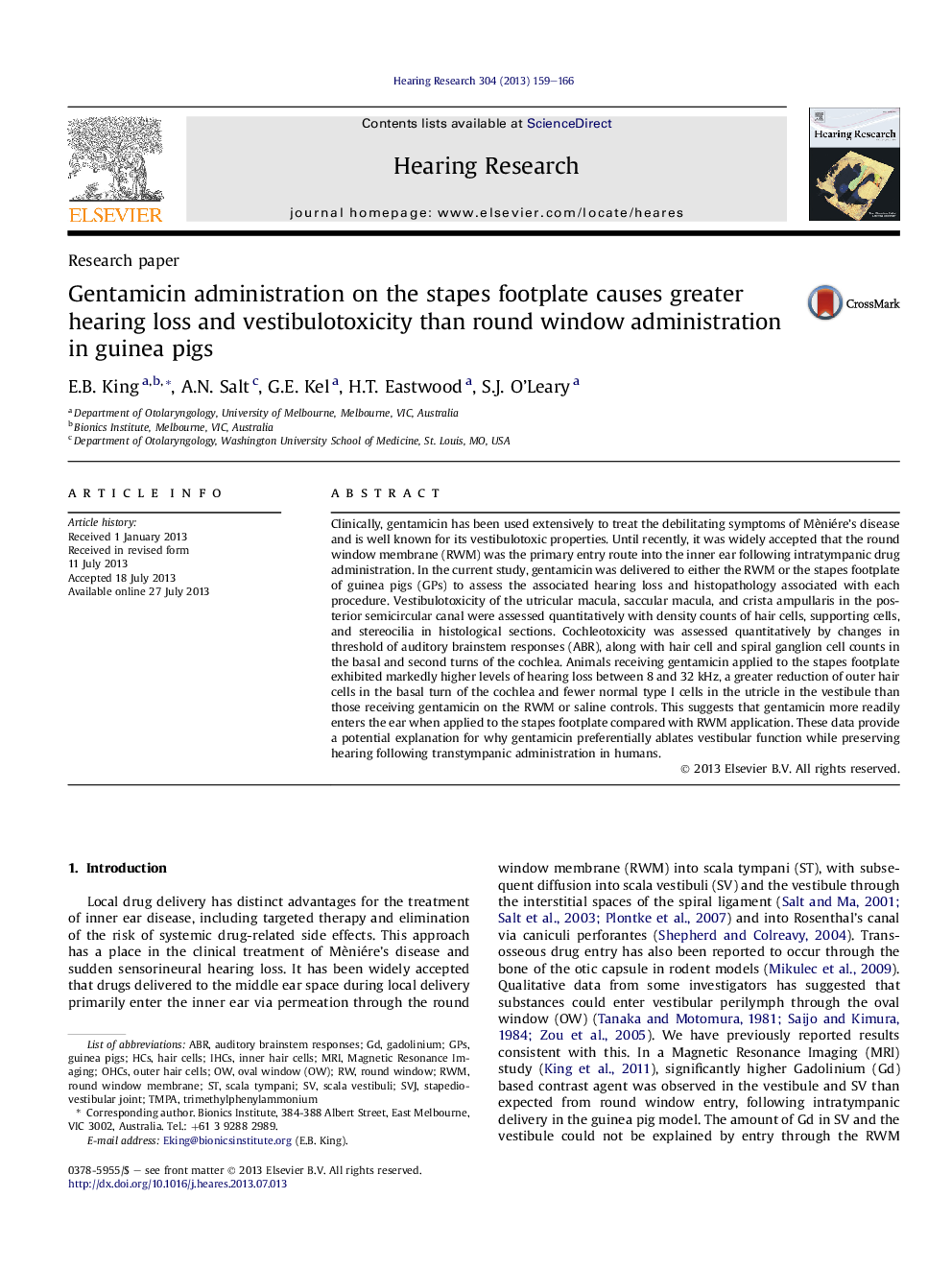| Article ID | Journal | Published Year | Pages | File Type |
|---|---|---|---|---|
| 6287503 | Hearing Research | 2013 | 8 Pages |
Abstract
Clinically, gentamicin has been used extensively to treat the debilitating symptoms of Mèniére's disease and is well known for its vestibulotoxic properties. Until recently, it was widely accepted that the round window membrane (RWM) was the primary entry route into the inner ear following intratympanic drug administration. In the current study, gentamicin was delivered to either the RWM or the stapes footplate of guinea pigs (GPs) to assess the associated hearing loss and histopathology associated with each procedure. Vestibulotoxicity of the utricular macula, saccular macula, and crista ampullaris in the posterior semicircular canal were assessed quantitatively with density counts of hair cells, supporting cells, and stereocilia in histological sections. Cochleotoxicity was assessed quantitatively by changes in threshold of auditory brainstem responses (ABR), along with hair cell and spiral ganglion cell counts in the basal and second turns of the cochlea. Animals receiving gentamicin applied to the stapes footplate exhibited markedly higher levels of hearing loss between 8 and 32 kHz, a greater reduction of outer hair cells in the basal turn of the cochlea and fewer normal type I cells in the utricle in the vestibule than those receiving gentamicin on the RWM or saline controls. This suggests that gentamicin more readily enters the ear when applied to the stapes footplate compared with RWM application. These data provide a potential explanation for why gentamicin preferentially ablates vestibular function while preserving hearing following transtympanic administration in humans.
Keywords
Related Topics
Life Sciences
Neuroscience
Sensory Systems
Authors
E.B. King, A.N. Salt, G.E. Kel, H.T. Eastwood, S.J. O'Leary,
